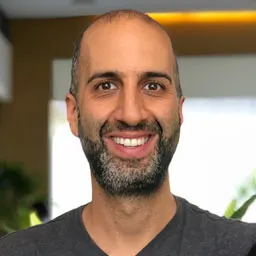Baby Teeth as an Adult: Causes, Treatment, and More

Table of Contents
- What are Adult Baby Teeth?
- Causes
- Potential Risks
- Treatment
- Frequently Asked Questions
- References
Children begin life with nearly fully formed baby teeth, 20 of them. Also called primary teeth, these teeth are the first set of teeth to grow.
They aren’t permanent and usually start falling out at 6 or 7 years of age. Their phased shedding continues throughout childhood, making room for permanent teeth to erupt. Most children lose their last baby teeth by the time they turn 13.
But some people keep their healthy baby teeth into adulthood.
What Are Adult Baby Teeth?
An adult baby tooth is a primary tooth that fails to fall out during childhood. Instead, it remains in place during adulthood.
While primary tooth retention is abnormal, it isn’t always a cause for concern.
These teeth can remain healthy years into adulthood, supporting regular oral functions like speaking and chewing.
Causes of Adult Baby Teeth
Studies have linked baby tooth retention to factors such as:
Absence of a permanent replacement
Impacted successor teeth
Movement of successor teeth
Dental diseases
Ankylosis
Most people have all 32 permanent teeth in place by age 21. When these teeth come in, they push out and replace the baby teeth.
In some cases, people fail to develop one or more adult teeth, usually because of birth defects. With nothing to push them out, the baby teeth that sit above these missing teeth may remain in place into adulthood.
Absence of successor teeth is the most common cause of adult baby teeth. Up to 8 percent of the U.S. population experiences hypodontia, which is one to five congenitally missing teeth. (Less than 1 percent of people have oligodontia, six or more congenitally missing teeth.)
Other times, a permanent tooth develops but doesn’t break through the gums at the expected time. This is called impaction and is the second-most common cause of retained baby teeth in adults.
A tooth that has not yet erupted may sometimes shift in the jawbone across the midline. When this occurs, the baby tooth it was meant to replace may not fall out in time.
Diseases that affect the tissues surrounding a baby tooth can cause impaction of the successor tooth. Among them are:
Cysts
Tumors
Gum disease
Dental caries
Ankylosis occurs when the root of a baby tooth fuses to the jawbone beneath it. This causes the baby tooth to remain in the mouth permanently unless it is removed through oral surgery.
Potential Risks
An over-retained baby tooth may not cause any functional or cosmetic issues. In these cases, the baby tooth can be kept as long as it remains healthy.
However, baby teeth are still anomalies in adult mouths. They can cause various dental problems if untreated. Watch out for the following issues if you have retained baby teeth:
Infraocclusion. This occurs when the biting surface of the smaller adult baby tooth is unable to make contact with the opposing adult tooth. Ankylosis of the baby teeth can cause this problem.
Gaps between your teeth (diastema). These gaps can affect the appearance of your smile and may cause difficulties with eating and speaking.
Root resorption. The root of a retained baby tooth may eventually be reabsorbed into the jawbone. This results in tooth loss.
Occlusal trauma. A retained primary tooth and its opposing permanent tooth often do not align properly when your jaws close. This mismatch can cause damage to your teeth when you chew.
Treatment Options
Available interventions for retained baby teeth include:
Extraction. Extracting adult baby teeth can eliminate overcrowding and help align teeth. This is only done when the space that the baby tooth will leave behind can be immediately filled by another tooth or a prosthetic.
Prosthetics. Artificial replacements for extracted baby teeth can help improve aesthetics and function. Options include dental implants and bridges.
Speak with your dentist or orthodontist about how each treatment option may impact your dental health and treatment needs in the future. Some options may be better suited to you than others.
Frequently Asked Questions
Nearly 7 percent of people do not develop all of their permanent teeth, which is the most common predisposing factor for adult baby teeth. When this happens, the baby tooth that has no adult equivalent usually remains in place well into the person’s adulthood.
Normally, you should not have any baby teeth left by age 13. However, some people’s baby teeth never fall out. If you keep your baby teeth healthy, you may be able to keep them in place for your entire life.
Sometimes an over-retained baby tooth can function well with no discomfort or esthetic issues. When this happens, the tooth can be left in place. In other cases, it may need to be removed to prevent problems like crowding or damage to your other teeth.
If a baby tooth remains healthy and does not cause any problems, they can remain in place for a person’s entire life.
